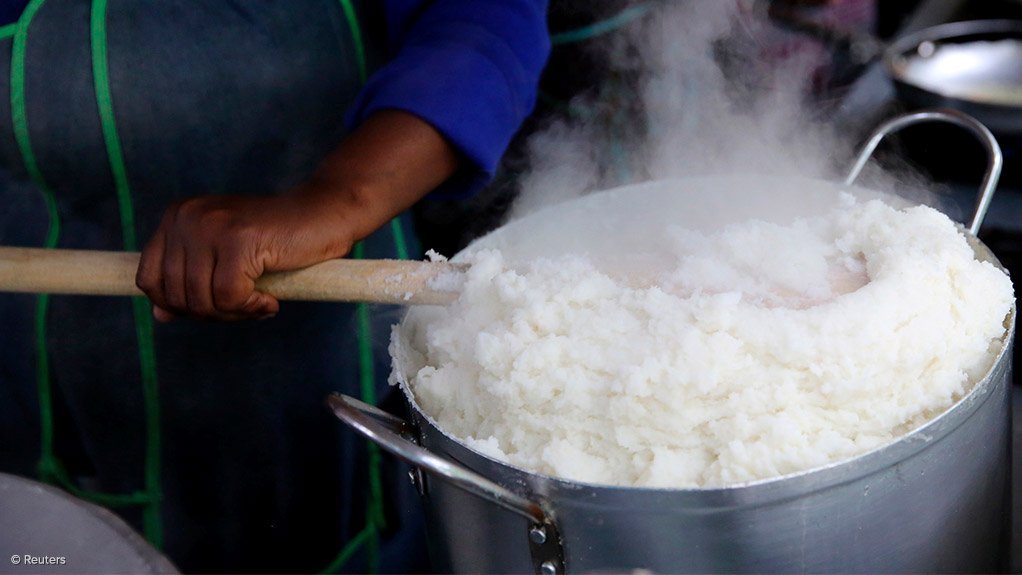South African food inflation accelerated again in July, the Bureau for Food and Agricultural Policy (BFAP) think tank has pointed out in its latest 'Food Inflation Brief'. The increase was 5.7% year-on-year and 0.6% month-on-month. Food inflation contributed one percentage point (ppt) to the year-on-year consumer price index (CPI) headline inflation figure of 3.5%, and 0.1 ppt to the month-on-month CPI headline inflation number of 0.9%.
Regarding wider economic factors that affected agriculture, in July the rand appreciated against the dollar by 2.7%, year-on-year, and by 0.4%, month-on-month. The South African CPI for “electricity and other fuels” was up 8.9% year-on-year and by 8.6% month-on-month (this latter figure owing to national electricity utility Eskom implementing an 11.32% increase in electricity charges to municipalities). The CPI figure for “fuel” fell -5.5% year-on-year, but rose 2.6% month-on-month.
The food category with the highest year-on-year inflation in July was vegetables, at 14.6%. Then came meat, at 10.5%, followed by fruits and nuts (9.5%), oils and fats (4.6%), non-alcoholic beverages (NAB – 4.4%), sugar and sugar-rich foods (3.7%), fish and other seafood (3.4%), and cereal products (2.1%). Dairy and eggs recorded year-on-year deflation of -0.8%. In month-on-month terms, the food category with the highest inflation was meat (3.3%), followed by fish and other seafood (0.1%) and sugar and sugar-rich foods (also 0.1%). NAB recorded zero month-on-month inflation. Food categories with month-on-month deflation were cereal products (-0.2%), dairy and eggs (also -0.2%), vegetables (-0.8%), oils and fats (-1.3%), and fruits and nuts (-4.9%).
The commonly purchased food items with the highest year-on-year inflation in July were fruit juice concentrate (37%), beef – rump steak, sirloin, chuck and stew (32.9%), lettuce (28.3%), apples (27.2%), carrots (26.6%), beef – brisket, T-bone, mince, and fillet (24.1%), and bell peppers (22%). Then came tomatoes (15%), instant coffee (12%), mutton/lamb – stew, chops, neck, and leg (11.2%), beef offal (10.2%), sweet potatoes (9.2%), Ceylon/black tea (9.1%), pumpkin (8.5%), onions (also 8.5%), hake and fish fingers (7.8%), various baked goods (also 7.8%), maize meal (6.6%), pork – ribs, bacon and chops (5.7%), spinach (5.5%), individually quick-frozen chicken portions (5.1%) and sugar-rich foods (5%).
Food items which recorded year-on-year deflation in July were (in the order given by the BFAP) wheat flour, pasta and rice; mutton/lamb offal, whole fresh chicken, and canned tuna; bananas; canned baked beans; ultrahigh-temperature-treated milk, sour milk, fresh milk, and eggs; and rooibos tea.
The BFAP’s Thrifty Healthy Food Basket (THFB) cost R3 963 in July. This is a 5.4%, or R202, increase, year-on-year, but a -0.6%, or -R25, decrease, month-on-month. The THFB is composed of a nutritionally-balanced combination of 26 food items from all the food groups, and is designed to feed a family of two adults, one older and one younger child, for a month. The THFB would have cost a low-income family 30.6% of its income in July, which is a slight decrease compared with the figure for June.
“The rand’s appreciation against the dollar continues to cushion local prices from rising international prices,” pointed out the BFAP. “Locally, a positive summer crop outlook is providing relief for grain and oilseed prices, with anticipated spillover effects on core staples and animal feed prices. Nonetheless, continued animal disease outbreaks pose risks to domestic supply and export opportunities, particularly for beef. In the coming months, exchange rate movements, especially in relation to uncertainty surrounding the policy direction of the new US government, input costs in the form of energy and fuel prices, and the success of animal disease containment strategies remain key factors in stabilising food commodity prices.”
EMAIL THIS ARTICLE SAVE THIS ARTICLE ARTICLE ENQUIRY FEEDBACK
To subscribe email subscriptions@creamermedia.co.za or click here
To advertise email advertising@creamermedia.co.za or click here











